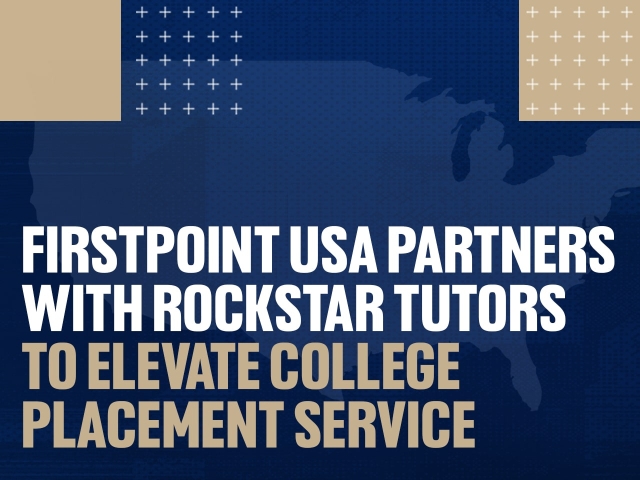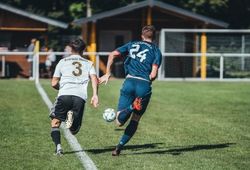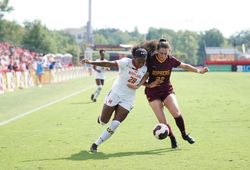Written by Laura Lewis, former athlete who has competed for both Great Britain and in the US at NCAA DI level, is now Associate Director for Olympic Sports at FirstPoint USA.
Thinking about playing college tennis? Talent alone won’t get you there. College tennis is fast, physical, and packed with long matches, intense travel, and tough competition. You’ll need a body that can keep up.
That’s where strength and conditioning (S&C) comes in. It’s what helps players move faster, hit harder, and avoid injury. And the sooner you start training smart, the more ready you’ll be when college coaches come calling.
In this guide, we’ll show you how some of the world’s best tennis fitness coaches train pros - and how you can apply those lessons as a high school athlete aiming for the next level.
Why S&C matters before college
Many high school players think hitting more balls is all they need. But the truth is, college coaches aren’t just looking for skill - they want athletes who are physically prepared to handle the demands of a college schedule.
That means:
- Strong legs and a powerful core
- Quick, controlled footwork
- The ability to play long matches without breaking down
- A mindset that includes rest, recovery, and smart habits
And you don’t need to wait until you get to campus to start working on all of that. In fact, starting now gives you an edge.
5 Areas You Should Be Training Right Now
1. Speed and footwork
College tennis is fast. You’ll need to move in every direction — and change direction quickly.
How to train it:
- Do short drills like lateral shuffles, sprint starts, and split steps.
- Keep your knees bent and stay low — balance is just as important as speed.
- Try mini footwork sessions (10 minutes) before or after practice.
2. Strength and injury prevention
Strength training isn’t about getting huge — it’s about creating a solid foundation. Strong legs help you stay low on shots. A strong core protects your back. And balanced shoulders and hips keep you healthy.
Start with:
- Bodyweight squats and lunges
- Planks, side planks, and bird dogs for core
- Resistance bands for shoulder stability
Aim for 2 strength sessions per week to build consistency.
3. Power and explosiveness
Serving and hitting on the run requires explosive energy. That comes from turning your strength into fast, athletic movements.
Good options:
- Medicine ball throws (if available)
- Jump squats or tuck jumps
- Short sprint intervals (10–20m)
Focus on quality, not quantity. Keep the reps low (3–6) and rest between sets.
4. Tennis-specific fitness
Tennis isn’t like running a 5K. It’s short bursts, quick stops, and a lot of repeat effort. So your training should match that.
Try this:
- Court sprints — sprint to the net and back, then side to side
- The MK Drill: a sprint-based drill created by Dr Mark Kovacs that mimics tennis movement. If you can’t do the full drill, make your own by sprinting and recovering in intervals (20 seconds on, 40 seconds off × 6).
5. Recovery and rest
Pro players treat recovery like part of training. Why? Because without it, your body doesn’t get stronger - it just gets tired.
Here’s what you can do:
- Get 8–9 hours of sleep every night
- Eat something with protein and carbs after training (like a smoothie or wrap)
- Take 1 full rest day per week
- Stretch or foam roll after intense sessions
Bonus tip: Keep track of how you feel using a simple traffic light system:
- Green = I feel great
- Yellow = I’m a little sore or tired
- Red = I’m really worn out
If you’re in yellow or red too often, scale things back.
How to Train Year-Round (Even in High School)
College athletes follow a schedule that changes throughout the year — and you can do the same. Here’s a simple plan:
|
Season |
Focus |
Weekly S&C Plan |
|
Off-season (summer) |
Build strength and fitness |
3 strength, 2 speed, 2 cardio, 1 recovery |
|
Pre-season (fall) |
Add power and court sharpness |
2 strength, 2 speed/power, 2 tennis drills |
|
In-season (spring) |
Stay healthy and consistent |
1–2 short strength sessions, more recovery |
Even if you're juggling school and tournaments, 2–3 focused sessions a week can make a huge difference.
Common Mistakes (and How to Avoid Them)
Lifting randomly
Not every gym workout helps your tennis. Make sure your training supports how you move and hit on court.
Solution: Focus on movements like lunges, squats, rows, planks — and exercises that help prevent common tennis injuries (like shoulder or groin problems).
Skipping the warm-up
Jumping straight into practice or lifting without warming up increases your injury risk.
Solution: Spend 5–10 minutes doing dynamic stretches, footwork drills, and light sprints. Think of it as activating your tennis muscles.
Ignoring recovery
Overtraining won’t help you get better — it just makes you tired and more likely to get hurt.
Solution: Prioritise sleep, take rest days seriously, and listen to your body.
Get College-Ready Before You Arrive
If your dream is to play college tennis, start training like a college tennis player — before you ever step on campus.
You don’t need to do everything perfectly. But if you:
- Stay consistent
- Train with purpose
- Build good habits now
...you’ll show coaches you’re not just talented - you’re prepared.
And when you’re ready to explore college tennis scholarships, we’re here to help.
Explore opportunities with FirstPoint USA — and take the next step toward your future on and off the court.




